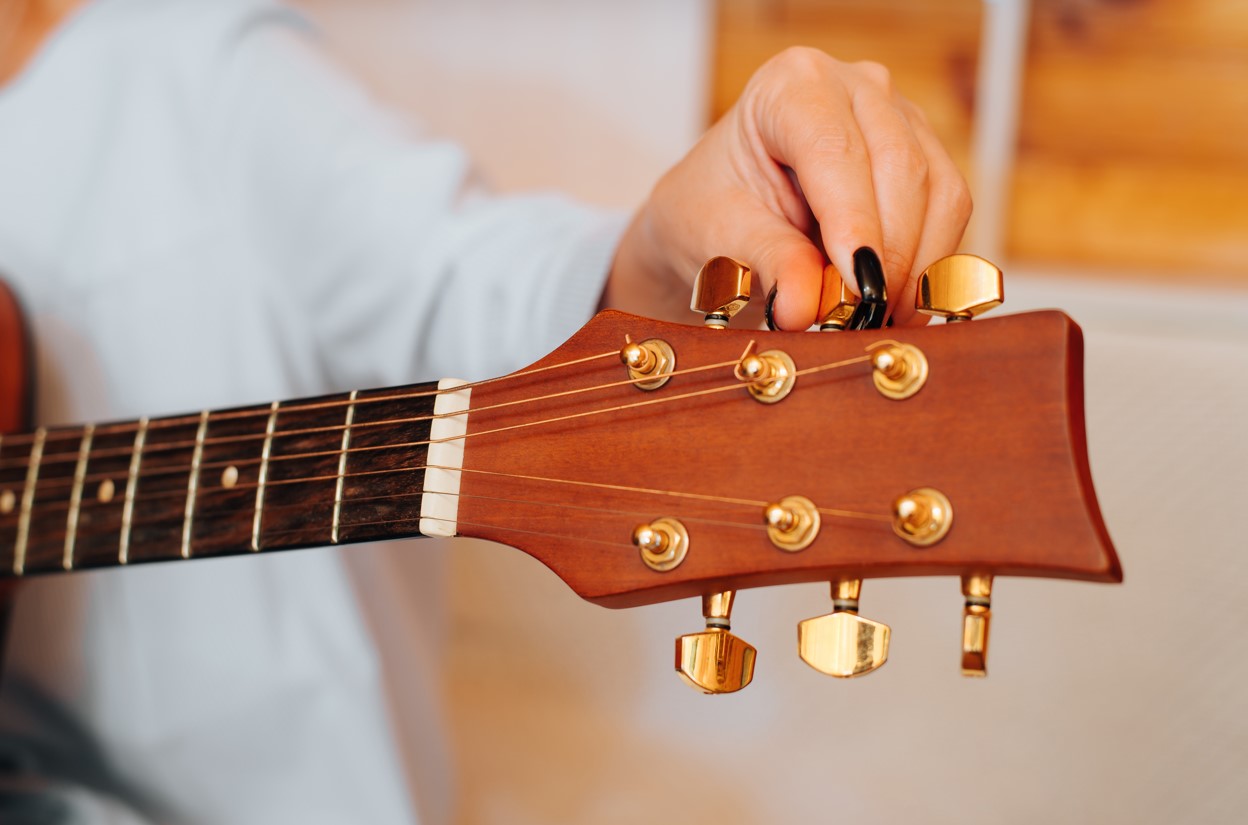
The Art of Alternate Guitar Tuning: Exploring New Musical Terrains
Just when you thought you'd exhausted all the musical possibilities your guitar has to offer, along comes the exciting world of alternate tunings. Think of it as discovering a hidden labyrinth within your trusty six-string, full of fresh and exciting possibilities. If you've found yourself stuck in a musical rut, or simply looking to expand your sonic palette, delving into the world of alternate tunings might just be the key you've been searching for.
Alternate guitar tunings are like secret pathways to a whole new musical landscape, unlocking a wealth of new chords, riffs, and tonal textures. They allow you to approach your guitar from a completely different perspective, transforming the familiar into something wonderfully exotic and inspiring.
Whether you're a seasoned pro or a curious beginner, the journey into alternate tunings is a thrilling ride that can breathe new life into your playing and your music. So, grab your guitar, open your mind and let's dive into the fascinating realm of alternate tunings. Who knows what musical treasures you'll uncover along the way? Let's go beyond the standard EADGBE and explore a whole new universe of sound!
Popular Alternate Tunings: A Gateway to New Sonic Adventures
Embarking on your journey into alternate tunings can be overwhelming, given the countless options available. Here are some popular alternate tunings to get started:
- Drop D Tuning (D-A-D-G-B-E): Achieved by lowering the low E string down a whole step, Drop D tuning is popular in rock, metal, and folk music for its powerful bass tones and simplified power chord shapes.
- Open G Tuning (D-G-D-G-B-D): Often associated with the Rolling Stones' Keith Richards, Open G tuning creates a rich sonority, ideal for slide guitar and blues playing.
- DADGAD Tuning (D-A-D-G-A-D): A favorite among fingerstyle guitarists, DADGAD tuning allows for unique chord voicings and easy access to suspended and modal sounds.
- Open D Tuning (D-A-D-F♯-A-D): Similar to Open G, Open D tuning reconfigures the guitar to play a D major chord when strummed without fretting any notes, making it popular in blues, folk, and slide guitar music.
Benefits of Alternate Tunings: Broadening Musical Horizons
Experimenting with alternate tunings offers several benefits for guitarists seeking to expand their musical creativity:
- Unique Chord Voicings: Alternate tunings create opportunities for accessing unconventional chord shapes that can add depth and variation to your music.
- New Melodic and Harmonic Possibilities: With alternate tunings, you can explore exciting new melodic and harmonic relationships beyond the limitations of standard tuning.
- Expanded Fingerboard Access: Some tunings make it easier to reach previously challenging fret positions and introduce fresh fingerboard patterns.
- Enhanced Resonance: Tuning your guitar to an open chord can enhance its natural resonance, creating a fuller, richer sound.
Practical Applications of Alternate Tunings: Experimentation and Authenticity
Alternate tunings can be applied in various practical ways to enhance your guitar playing:
- Composition and Songwriting: Utilizing alternate tunings can unlock new creative potential, inspiring fresh ideas and approaches to composing music.
- Slide Guitar Playing: Many slide guitarists prefer open tunings to maintain consistent chord shapes across the fretboard, facilitating smoother transitions and improved phrasing.
- Fingerstyle Guitar: Alternate tunings can simplify complex fingerpicking patterns and create new harmonic possibilities for fingerstyle guitarists.
- Reproducing Iconic Sounds: Adopting the tunings used by your favorite artists can help you achieve a more authentic sound, capturing the essence of their unique playing style.
Tips for Adjusting to Alternate Tunings: Finding Your Comfort Zone
To make a smooth transition into alternate tunings, keep these helpful tips in mind:
- Use a Digital Tuner: Accurate tuning is essential when exploring alternate tunings. Use a high-quality digital tuner to ensure precise intonation.
- Allow Time for String Settling: Changing tunings may temporarily affect string tension and tuning stability. Give your strings time to settle before playing.
- Adjust Action for Slide Playing: If using alternate tunings primarily for slide guitar, consider raising your guitar's action for improved playability.
- Take a Gradual Approach: Explore one tuning at a time, allowing yourself to become familiar with its unique properties and intricacies before moving on to another.
The Art of Musical Expression through Alternate Guitar Tunings
Delving into the expansive world of alternate guitar tunings offers a thrilling way to enhance your musical creativity and spark new-found inspiration. By experimenting with various tunings, you can push the boundaries of conventional guitar playing, uncover new sonic possibilities, and forge a deeper connection with your instrument.
As you embark on your journey into alternate tunings, remain open to exploration and experimentation. This mindset will facilitate your growth as a musician while preserving the authenticity and uniqueness of your artistic voice.
Elevate your alternate tuning journey with our legendary guitar capos and trusted handcrafted guitar accessories at Kyser Capos, designed to maximize your playing experience and fuel your musical inspiration.



Leave a comment
This site is protected by reCAPTCHA and the Google Privacy Policy and Terms of Service apply.